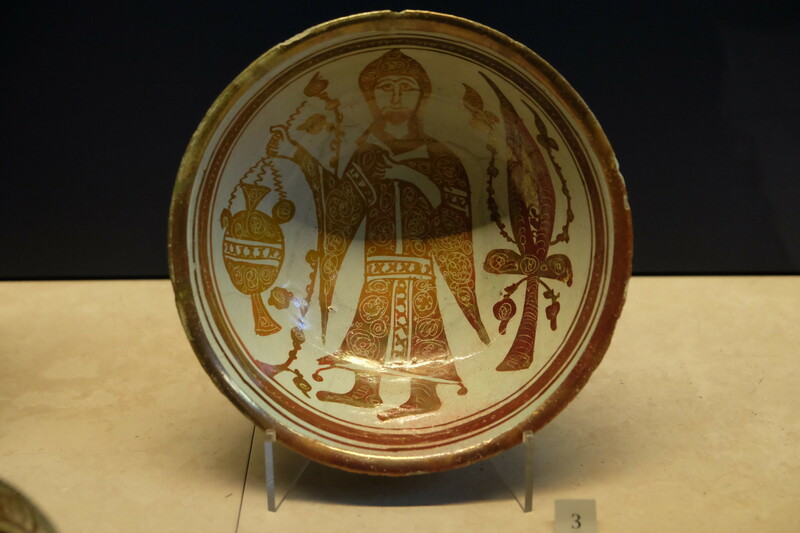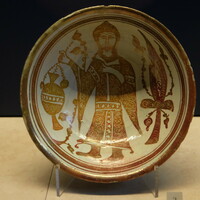Lusterware bowl with Coptic priest
Date:
Second half of eleventh century
Location or Findspot (Modern-Day Country):
Egypt
Medium:
Lusterware
Dimensions:
23.5 cm diam. × 10.4 depth
Description:
On the interior of this tall, footed bowl, a man in a hooded robe holds a censer (or lamp) in his right hand. His garment, with wide sleeves and pointed hood, suggests that the man is a Coptic priest or monk. To his left is a tree that closely resembles the ankh, an ancient Egyptian symbol of eternal life used in medieval Egyptian art. On the exterior, the word Sa'd is written twice (in reverse, from left to right); it means "happiness" in Arabic, so it might be a generic wish for the user, but it could also be the name of the potter. This word or name appears on other lusterware ceramics from Egypt, including one bowl reused on a church facade in Pisa. This group of objects is conventionally dated to the reign of Caliph al-Mustansir (r. 1035–94). Lusterware was a challenging technique used only in the Islamicate world, but that world contained sizable non-Muslim populations. In Fatimid Egypt that included Coptic Christians (and Jews) who also used Arabic and purchased these attractive ceramics.
Relevant Textbook Chapter(s):
6,
7
Repository and Online Resources:
• See more images of the bowl, including the exterior, on the Victoria and Albert Museum website.
• Watch a video in which Venetia Porter, curator of Islamic Collections at the British Museum, discusses this bowl.
Image Credits:
Flickr, Brad Hostetler


